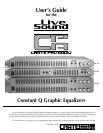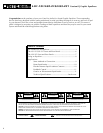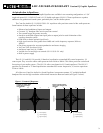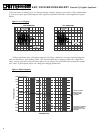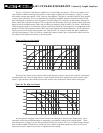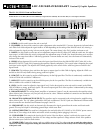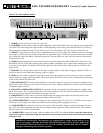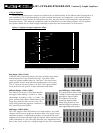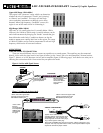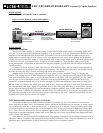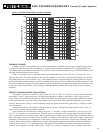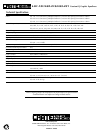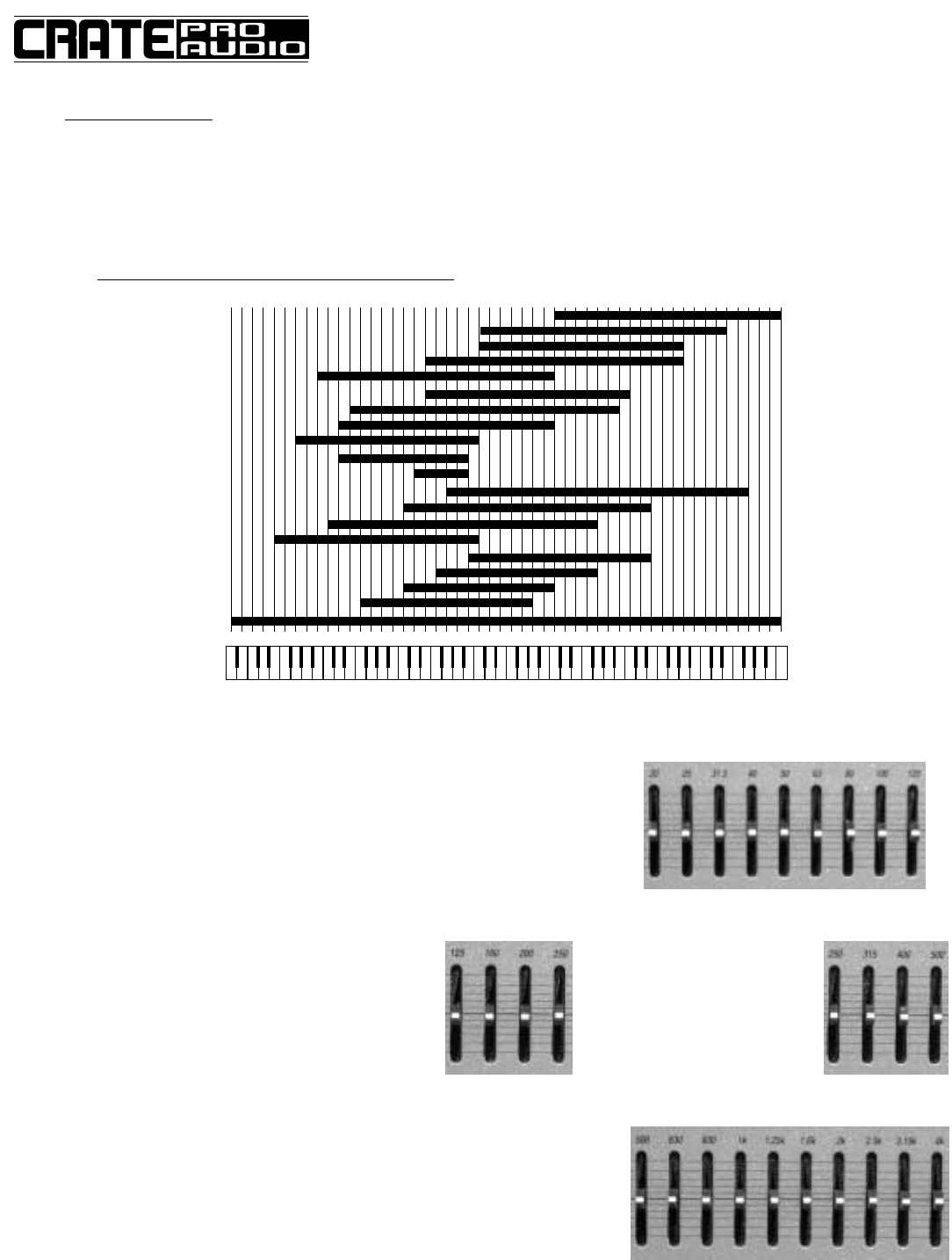
Using an Equalizer:
Mixing and equalizing music requires an experienced ear and knowledge of the different tonal characteristics of
each instrument. The voice characteristics of some common instruments are compared to a conventional 88-note
piano keyboard in figure 5 below. As indicated on the chart, the piano has the widest frequency range among the
instruments shown. This makes the comparison easier to understand. For instructional purposes, we will separate
the equalizer bands into six distinct ranges and briefly explain the tonal characteristics of each section.
Bass Range: (20Hz-125Hz)
Unlike the other instruments shown, the piano contains some funda-
mental frequencies in the 20Hz-40Hz range . The 40Hz-120hz
range has a greater audible effect on “low bass”. The electric bass
guitar and the acoustic bass both have fundamentals in this region
(The “E” string on an electric bass is 41.2Hz). This region provides
much of the low end “punch” in bass instruments and drums.
Mid-Bass Range: (125Hz-250Hz)
The “fullness” of the mix will be determined in
this region, either adding a “thicker” or “fatter”
characteristic or making it “thin” or “weak”. The
guitar and bass both contain fundamentals in this
range along with the male or tenor voice. This
region also provides the apparent “loudness” of a
mix, especially around 160Hz.
Mid-Range: (500Hz-4kHz)
This is the range at which the human ear is most sensitive. Very small
changes in this area can produce a dramatic effect. This region is most
commonly reduced in amplitude to produce a rich sound with more
emphasis on low bass and upper high end regions. When equalizing indi-
vidual instruments in a mix, this range becomes very important to bring
them to the “front” of the mix, cutting through the rest of the instruments.
8
LS1-131/LS2-215/LS3-231
Constant Q Graphic Equalizers
A B C D E F G A B C D E F G A B C D E F G A B C D E F G A B C D E F G A B C D E F G A B C D E F G A B C
27.50
32.70
30.87
36.71
43.65
41.20
49.00
61.71
55.00
65.41
82.41
73.42
87.31
110.00
98.00
123.47
146.83
130.81
164.81
196.00
174.61
220.00
261.63
246.94
293.66
349.23
329.63
392.00
493.88
440.00
523.25
659.26
587.33
698.46
880.00
783.99
987.77
1174.66
1046.50
1318.51
1567.98
1396.91
1760.00
2093.00
1975.53
2349.32
2793.83
2637.02
3135.96
3520.00
4186.01
3951.07
PIANO
BASS
TENOR
ALTO
SOPRANO
BASS VIOLIN
CELLO
VIOLIN
CYMBALS
TIMPANI
VIOLA
TUBA
TROMBONE
TRUMPET
FRENCH HORN
BASSOON
CLARINET (Bb)
FLUTE
PICCOLO
OBOE
Figure 5: Frequency Range Comparison Chart:
Low-Mid Range: (125Hz-250Hz)
This range tends to add a harsh
“muddy” sound when boosted,
particularly around 300Hz.
This sliders in this region
should be adjusted to the
detent (flat) position or even
reduced slightly to produce a
more appealing tonal quality.



